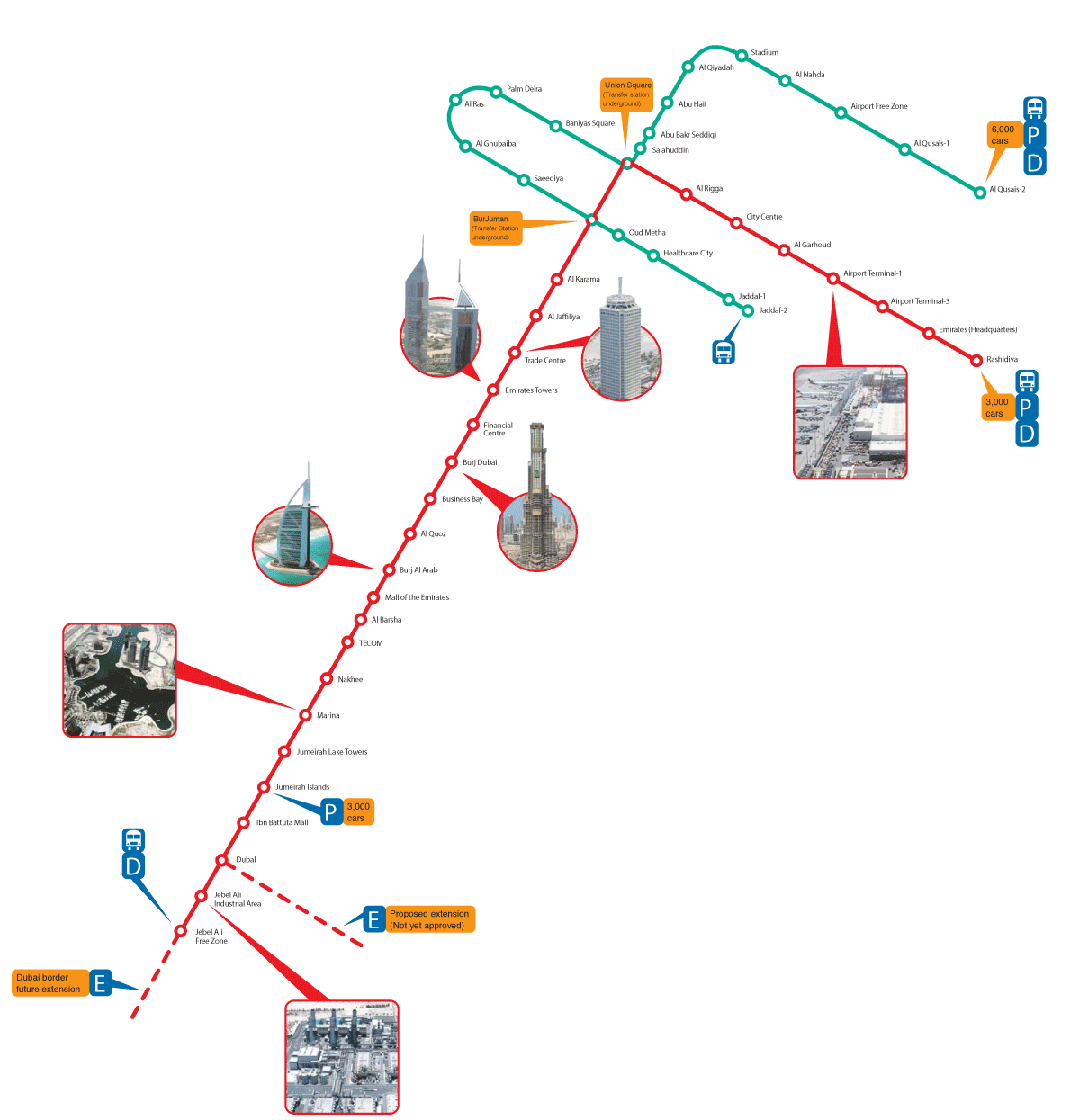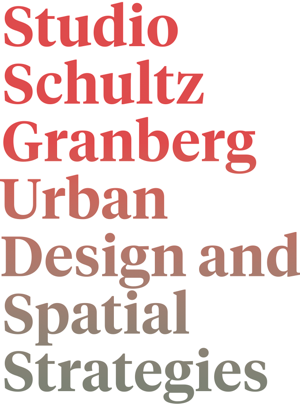Dubai Metrozone
Urban Resaerch + Exhibition

Dubai is known as a city of superlatives. Before the financial crisis of 2008, countless real estate projects developed in rapid succession, expanding both along the coast and into the desert. With the construction of the Dubai Metro in 2005, one of the largest infrastructure projects in the Persian Gulf was created. Dubai Metrozone investigated the potential for future transformations.
Dubai is known as the capital of superlatives: it is famous for the highest free-standing hotel in the world, the largest artificial islands, the largest shopping centre, the tallest high-rise on the planet (Burj Khalifa, towering at 828 metres)… The city is also growing rapidly. Over the past few decades its population has increased six fold. An expansive urbanism of competing master plans has established itself, striving for uniqueness on the battlefield of iconic architecture. Each project so far has been built as a separate, isolated theme world.
However, as an infrastructure project, the construction of the Dubai Metro offers new perspectives for everything that has previously been done: real estate values will rise in proximity to the stations. Compression and intensification will open up design possibilities for new urban typologies. And a new type of actor will appear: the pedestrian, who will no longer rely solely on the car for their movement. Perhaps the Metro will become the starting point for new dynamic and social interactions in a lively open space: the Metrozone.
This perspective triggered the idea of a 4-metre large, speculative map for the “Dubai Metrozone”. The constantly evolving infrastructure shows options for potentially new urban typologies. The map was exhibited within the framework of Parallel Cases in occasion of the 2009 edition of the International Architecture Biennale Rotterdam.
Exhibition at the Parallel Cases of the International Architecture Biennale in Rotterdam, IABR 2009
Team: Joachim Schultz-Granberg, Alexandra Böcker, Julian Münzel, Andreas Rauch, David Serrao, Jenny Wahren, Andrea Wycisk
Partner: Rebal Knayzeh (Fotos), Adina Hempel


WHEN I WAS SIX … I fell and fractured my arm and dislocated my elbow. I was rushed to the hospital where the next thing I remember is waking up with a dry mouth and a cast on my arm. Now I boast a 14-stitch scar on my left arm. Dubai will soon boast its own scar, the result of an extensive operation that requires deep incisions, a broad cast and that hopefully heals quick enough to rectify the damage that necessitated this operation in the first place. The scar for all to see is the elevated track of the new Metro Dubai.
The streets of Dubai today are the epitome of temporary solutions, temporary diversions on its highways, temporary signage temporary traffic lights. Look a little further and you would realize that Dubai’s entire population is there on temporary basis. That may be why no one cares to leave his or her mark. There is no graffiti, no public art, there is no public civic space to begin with. (…)
The changes that we may anticipate are numerous, and the repercussions are hard to predict. No one from Le Corbusier, to Jane Jacobs, to Lewis Mumford with their diametrically opposed yet similarly western theories can predict the outcome of this “old” mode of transportation.
Will rent in the areas closest to the stations rise? Or will the inhabitants rush to quieter locations. Will people actually use it and if they do will they accept sharing the same car with others from every rank and walk of life? Will this new “easy” mode of transportation bring the much feared, much hidden face of Dubai, the swarms of Asian laborers into the city on the weekends? This is the ultimate test of public interaction. It is easy for car drivers to pass by the many labour transportation buses on the congested highways and complain about the ogling eyes of many of the workers. Would the same people accept sharing the same bench on the train with the workers?
Rebal Knayzeh (Text und Fotodokumentation des Baus der Metro Dubai)










related projects
Xeritown Masterplan in Dubai
